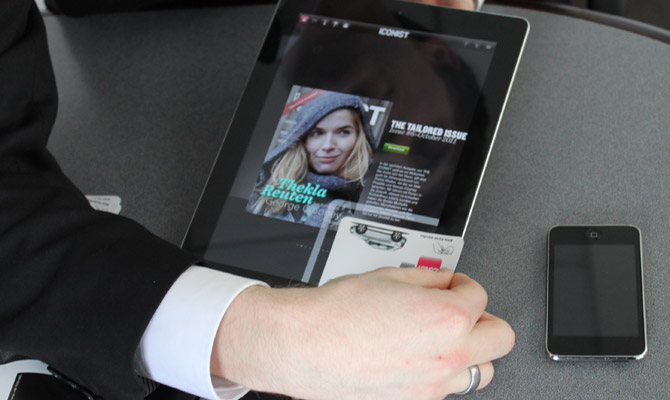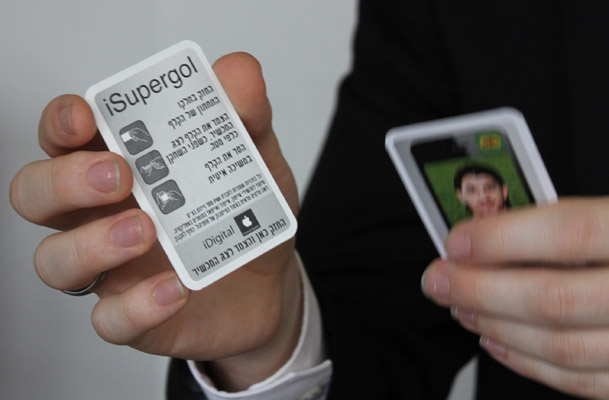QR Code Killer? Touchcode Opens Content By Tapping Paper to Screen

These days, QR Codes, those barcodes you can scan to launch a website or unlock exclusive content are everywhere from magazine pages to prepaid coffee cards. However, reading a QR code requires activating a camera app on a phone or tablet, turning your device around, shooting a picture, and then waiting for the appropriate app to interpret the code. A new technology promises to change all that, allowing you to unlock exclusive content in apps or web pages by simply touching printed materials like business cards or packages to your screen.
Dubbed Touchcode, the new technology works by embedding a thin layer of capacitive material in printed items like business cards, tickets, magazine pages, or product packaging. When you hold the paper to a capacitive touch screen, it acts like a set of invisible fingers tapping out a complex code that's interpreted by a Touchcode-enabled app or website. Though the app should run on any multitouch-enabled, capacitive screen, it works best with panels that support at least 5-points of touch input. Like QR codes, Touchcodes can be used for launching web pages, enabling coupon codes, event ticketing, or even mobile payments.
The brainchild of German startup Printechnologics, Touchcode is intended to be both cost effective and easy-to-implement. Printing houses can license the technology and easily add the inexpensive Touchcode layer to their production processes at a projected cost of less than a penny per unit printed.

To read the codes on a device, users will need to launch an app or site that's capable or reading Touchcode. Rather than creating a universal Touchcode app, Printechnologics has an SDK that companies can use to build the functionality into their own apps on Android, iOS, or web apps with more platforms like Windows Phone 7 coming.
By building the Touchcode reader into their own applications, companies focus the spotlight on their own products rather than the technology behind them. As a user, you may not see the "Touchcode" name or branding on objects that use it. However, this also means that users will need to take the additional step of installing a new app or visiting a new web page for every Touchcode they encounter. The same reader app can scan any QR code in the world.
Touchcode has already been deployed successfully in Europe where a German magazine called Iconist included a removable business card in a recent issue, which when touched to the screen in its iPad app, downloads a free digital edition. In Israel, PMI released a series of iSupergoal soccer trading cards which enable users to add players to their fantasy teams by simply rubbing the cards against a phone or tablet screen while a special app is running.

In the U.S., a number of companies are planning to release Touchcode-enabled products in the near future. However, when we met with a Printechnologics rep, the only non-embargoed English-language example he could show was a business card from 3M that launches special holiday content when touched to a tablet's screen while the device is visiting a page of that company's website. Using the card he gave us, we were able to use the 3M card on our own iPad.
Stay in the know with Laptop Mag
Get our in-depth reviews, helpful tips, great deals, and the biggest news stories delivered to your inbox.
Though we don't expect Touchcode to replace QR codes or related technologies like RFID and NFC, it has a world of potential. Imagine visiting the supermarket, and holding your phone screen against the label of a pasta box to get recipes and a shopping list of related ingredients. Picture a magazine where you launch related videos for each story by holding your phone against a box on the page. Envision yourself getting a coupon card in the mail and touching it to your phone to enable a discount. By allowing users to read codes through the screen rather than the camera, all of these tasks feel more natural and intuitive.

